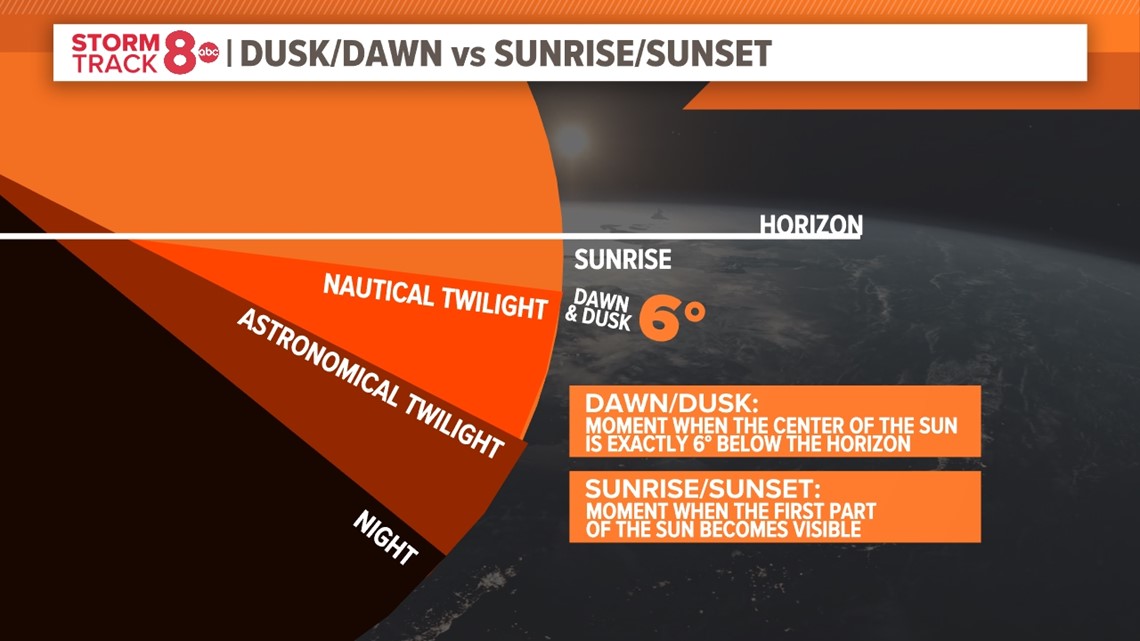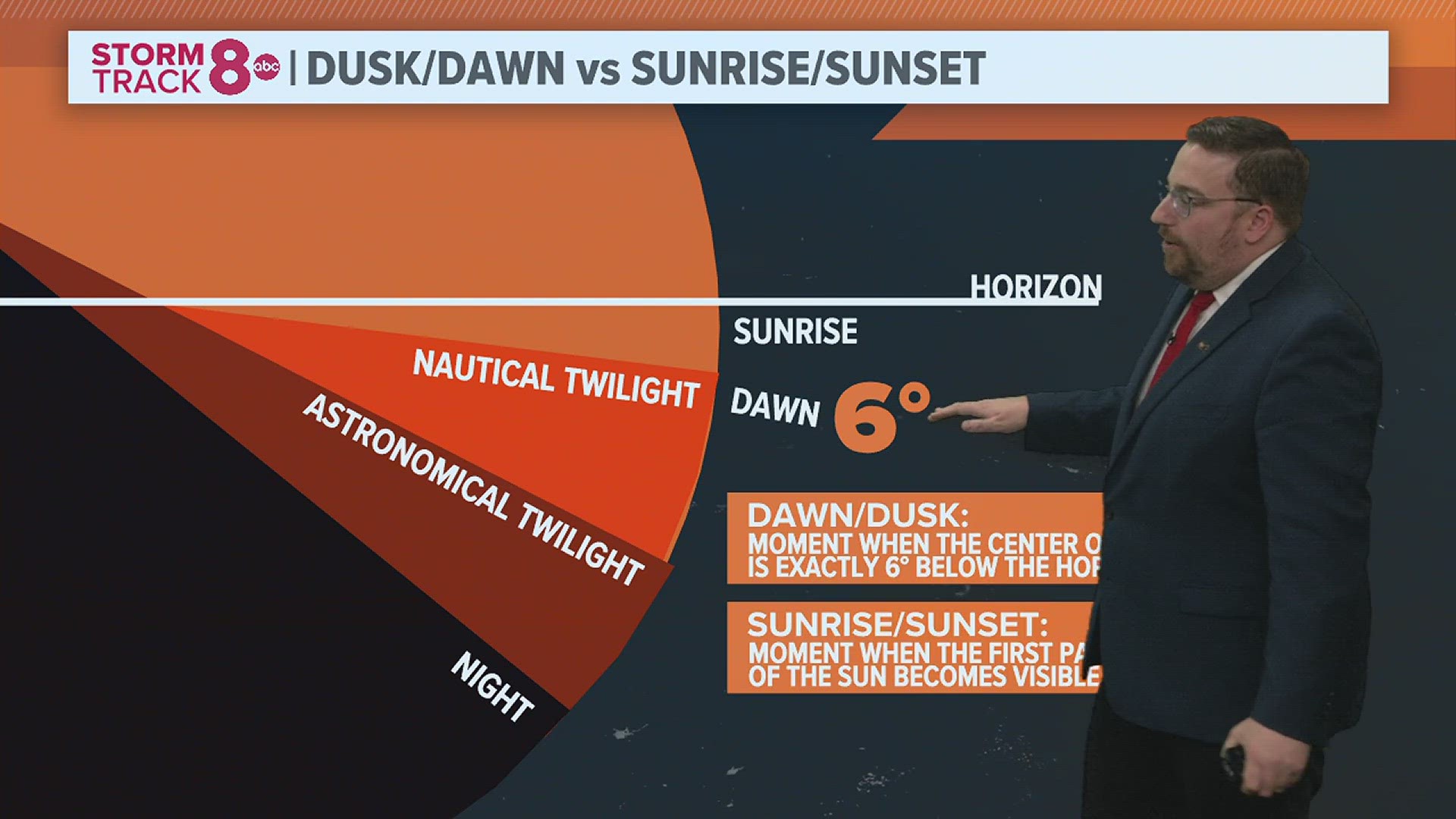MOLINE, Ill — Sunrise and sunset are terms we are relatively familiar with in describing the daily motion of the sun and the amount of light or darkness that surrounds us. What about dawn and dusk? That's usually verbiage you'll frequently see on park signs, indicating their operating hours. While both occur within proximity to each other, there is a marked difference, and it's a great question brought to us by Linda in Moline. Let's dig in!
Different types of dawn and dusk
Did you know there are three different definitions of dawn and dusk? Civil, Nautical, and Astronomical.
Civil Twilight: The brightest of the three different twilight phases. Generally, there is enough natural light to continue outdoor activities without the assistance of artificial lights.
Nautical Twilight: The second brightest stage. Both the horizon and the brighter stars are typically visible at this time.
Astronomical Twilight: The darkest of the three different twilight phases. The earliest stage of dawn in the morning and the last stage of dusk in the evening.
Dawn vs Sunrise, Dusk vs Sunset
So, what's the big difference if they are so close to each other? Dawn is the time of the morning when the sun is exactly 6° below the horizon, same with dusk. Sunrise is defined as the time when the first part of the sun becomes visible in the morning. Sunset is the time when the last part of the sun disappears below the horizon in the evening.


While it may not seem like there is a big difference between the two terms and times, there is depending on what activity you might be doing. Whether you are a stargazer or perhaps you are setting sail down the Mississippi River, it's helpful to know these crucial times.
Have a question you would like me to answer for an upcoming Ask Andrew segment? Submit it, here.
Watch more news, weather and sports on our YouTube channel

